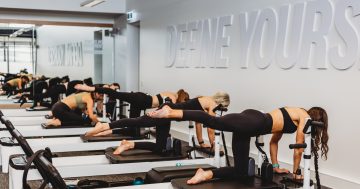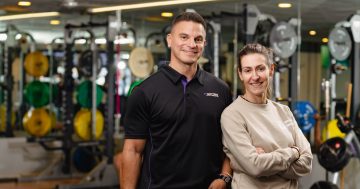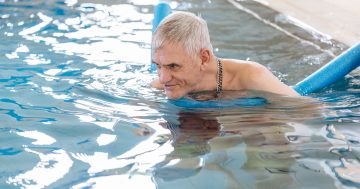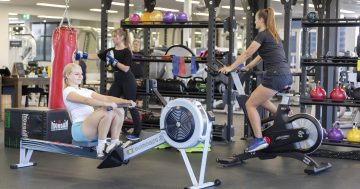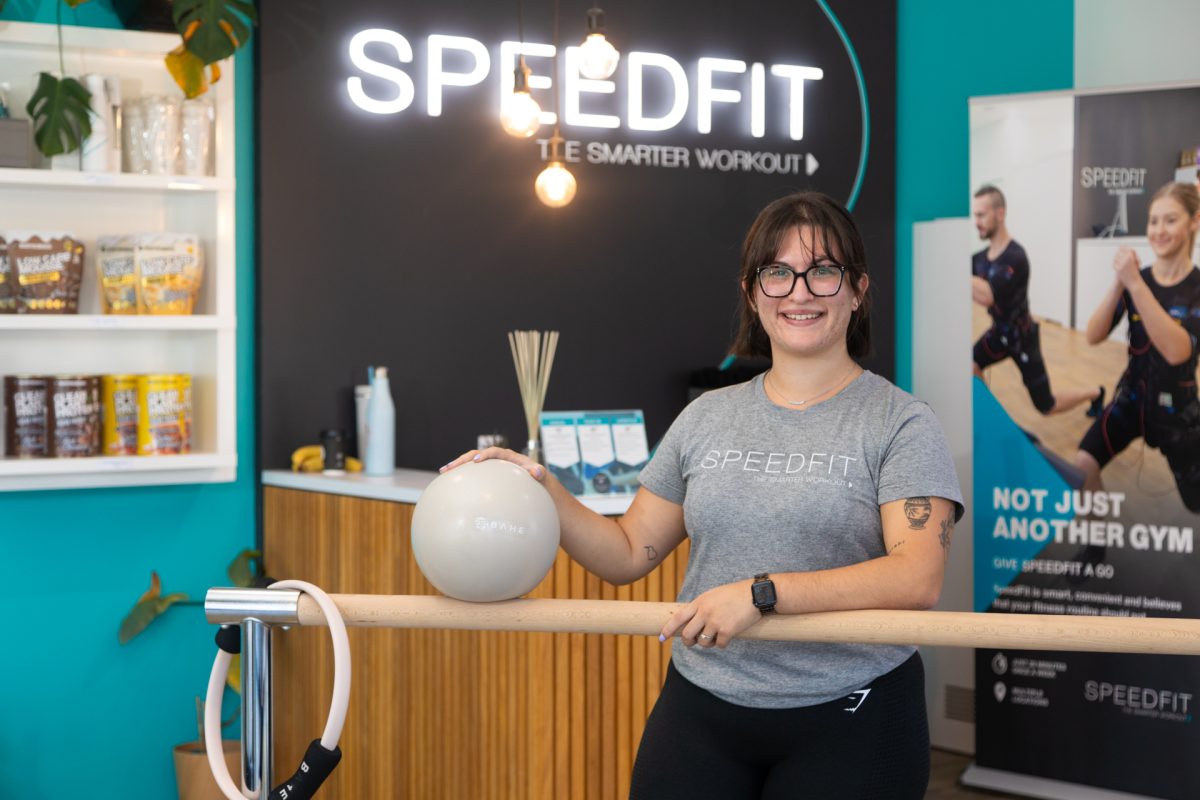
Tiani Estrella is the head trainer at SpeedFit in Kingston, which offers Canberra’s first Electromagnetic Muscle Stimulation (EMS) training program. Photo: Michelle Kroll.
During COVID lockdowns, Lanette Helene delved into research on innovations in the physical rehabilitation and fitness space.
It wasn’t a surprising choice for a Pilates instructor of 30 years who had already co-authored multiple papers for scientific journals – but she didn’t expect to stumble on what she calls the “future of fitness”.
All roads seemed to lead to Electromagnetic Muscle Stimulation (EMS) training, which involves applying an electrode to a muscle to “fire up” the fibres. This external stimulation, coupled with the correct physical responses (movements, tension and exercises), elicited an incredibly efficient response, yielding the same results as a much more strenuous workout.
“I became convinced it was a beautiful fit for pilates and, quite possibly, the future of fitness. And it’s proving to be that way,” she says.
Lanette brought the first EMS training to Canberra – SpeedFit.
She says by combining personal training with the science of EMS, SpeedFit makes your muscles work harder, providing the benefit of a whole-body workout in only 20 minutes.
In the session, participants don a ‘SpeedSuit’, which is not unlike a wetsuit in appearance, which applies electrodes to the biceps, triceps, hamstrings, quadriceps, gluteals, abdominals, back and chest muscles. Participants are then guided through a 20-minute, moderately-paced workout as the electrodes go through a pattern of 10 seconds under impulse and five seconds rest.
“If you were to pick up a one-kilo weight in a bicep curl, you’d fire up your bicep to maybe 20 per cent of its capacity. If you upped that to 20 kg, you might reach 80 per cent capacity. The external stimulation of the SpeedFit electrodes could automatically have your muscle fibres firing at 80 per cent capacity without lifting that weight,” Lanette says.
“At the same time, we incorporate exercises commonly used in gyms and studios – lunges, squats, biceps curls and so on. We increase or decrease stimulation to certain parts of the body based on the client’s feedback.
“Using this method, you’re engaging the muscles to the same capacity as though you were lifting those heavy weights, and all over your body at the same time – so it’s really efficient.”
SpeedFit founder Matej Varhalik first used EMS in his native Slovakia as a convenient, 20-minute low-impact workout to help regain fitness without aggravating his back.
Lanette says this highlights two of the most significant benefits of the method: aside from efficiency, it also has implications for wear and tear on the joints and nervous system.
“When you’re lifting heavy weights in a gym, your body, joints and nervous system get so fatigued that you typically can’t do your whole body in one session efficiently,” she says.
“Because SpeedFit uses an external stimulant, the joints don’t have to bear the weight of resistance.”
External stimulation methods are not a novel concept, but unlike some of the dubious “quick fix” solutions consumers might remember from early 2000s infomercials, EMS training does not purport results without work.
“You’re not going to sit and wait for a machine to do it for you,” Lanette says.
“That’s why SpeedFit trains instructors to guide you on proper alignment, timing, tensing muscles, movements and so on. You will sweat, you will leave feeling as though you’ve done a workout and you’ll feel energised. While the stimulation can feel ‘odd’, there’s no pain per se during the session, but two days later, you’ll get the same ‘DOMS’ (Delayed Onset Muscle Soreness) as you would from a weights session at the gym.
“That’s how our muscles become bigger and stronger; we work the muscle fibres to the point where they’re partially broken down and have to regenerate. The only difference is EMS can do that while protecting the joints and nervous system.”
However, DOMS is not the only proof of concept that clients should look for. According to Lanette, the results quite quickly speak for themselves.
She recommends that most clients complete a maximum of two sessions a week and says that, like with any resistance training, clients will feel the effects of the work on their muscles immediately after the session. By week six, most clients should see and feel a significant change in their strength.
The concept attracts a diverse cohort.
“We get a lot of clients who suffer from chronic lower back pain or neck pain and walk away pain-free. We’ve been doing a lot of rehab and post-op work for people who’ve had knee replacements and shoulder reconstructions,” she says.
“We’re now able to provide NDIS programs and help older people or people with joint or neurological issues.
“Many clients, particularly women, find the gym environment is not their scene, or they want more personalised attention. Others want to add a cross-training tool to their existing fitness regimes to take their outcomes to the next level.
“We also work with a lot of people who are simply time-poor – people for whom it’s simply impossible to spend an hour twice to thrice a week working out. Everyone from the busy CEO to the new mum.”
For more information, visit SpeedFit Kingston.
